Exploring New Zealand Climate Change in Groundwater
Alan Seltzer, a senior at Columbia University, traveled to New Zealand this past summer to work on field experiments aimed at reconstructing temperatures in the region over the last 20,000 years. His adviser, geochemist Martin Stute, is working closely with colleagues at Lamont-Doherty to understand how the southern hemisphere came out of the last ice age.
By Alan Seltzer
Image Carousel with 8 slides
A carousel is a rotating set of images. Use the previous and next buttons to change the displayed slide
-
Slide 1: Columbia undergrad Alan Seltzer (left) and GNS scientists Uwe Morgenstern and Mike Stewart in Nelson, New Zealand.
-
Slide 2: The team collected groundwater samples from private wells and brought samples back to Lamont for analysis.
-
Slide 3: To collect samples on the South Island the group crossed the Cook Strait by ferry.
-
Slide 4: Scientists Uwe Morgenstern, Mike Stewart, Rob van der Raaij, and Vanessa Trompetter of the GNS Science in New Zealand joined in for the travel and sampling.
-
Slide 5: Dissolved noble gas samples were collected in a copper tube enclosed in an aluminum frame. By tightening the ends of the frame, a cold weld seals the water sample with no degassing.
-
Slide 6: Collecting samples was not always trivial â configuring connections and ensuring adequate pressure in the tubing was necessary to make sure samples were collected without including any air.
-
Slide 7: For wells where a pump or artesian flow werenât available, samples were collected in situ by lowering pressurized tubes into the well and removing pressure to collect water at depth.
-
Slide 8: On the last day of fieldwork the team sampled in the Taranaki region on the North Island. Mount Taranaki, an active volcano, stands in the distance at a sampling well.
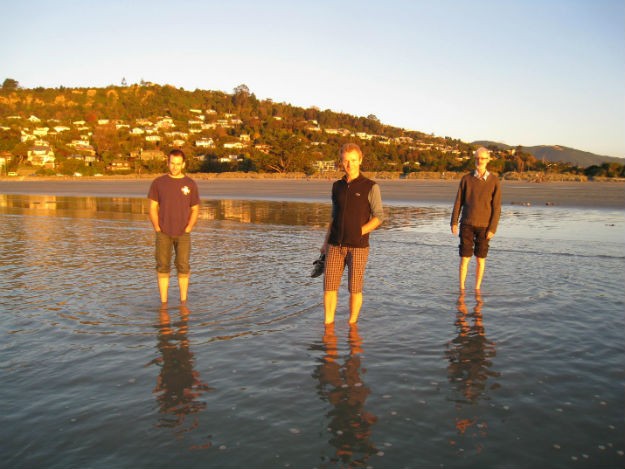
Columbia undergrad Alan Seltzer (left) and GNS scientists Uwe Morgenstern and Mike Stewart in Nelson, New Zealand.
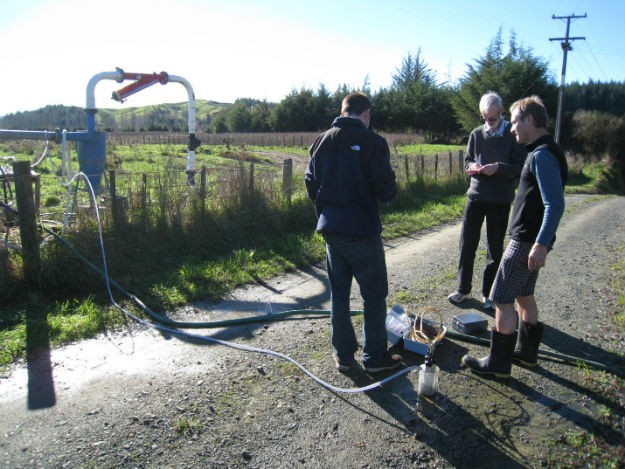
The team collected groundwater samples from private wells and brought samples back to Lamont for analysis.
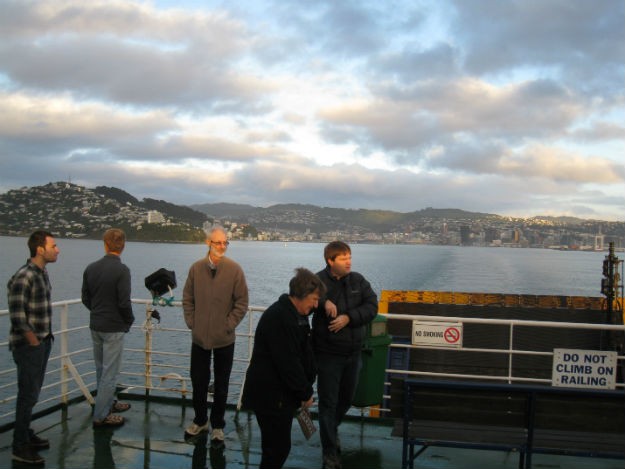
To collect samples on the South Island the group crossed the Cook Strait by ferry.
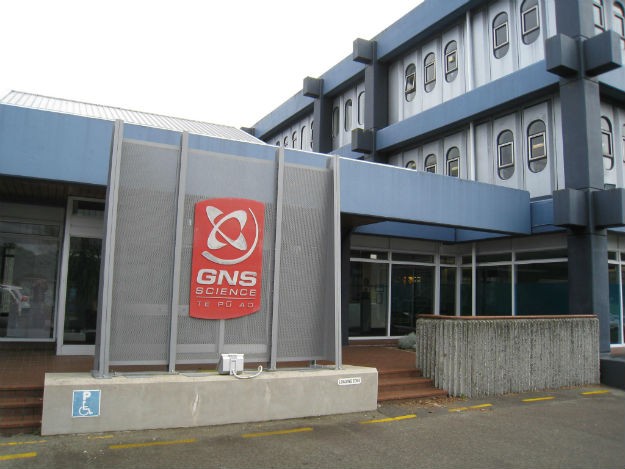
Scientists Uwe Morgenstern, Mike Stewart, Rob van der Raaij, and Vanessa Trompetter of the GNS Science in New Zealand joined in for the travel and sampling.
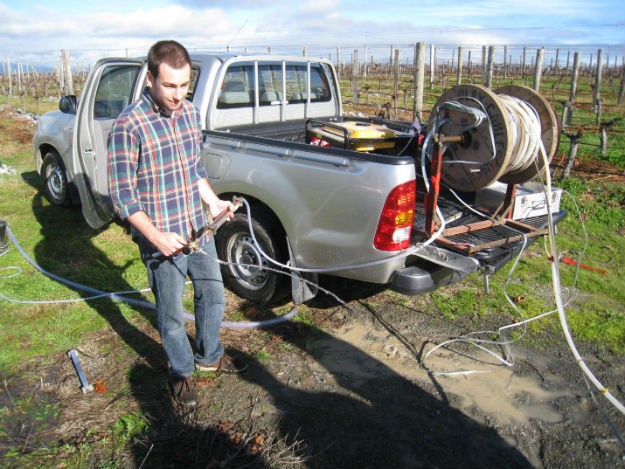
Dissolved noble gas samples were collected in a copper tube enclosed in an aluminum frame. By tightening the ends of the frame, a cold weld seals the water sample with no degassing.
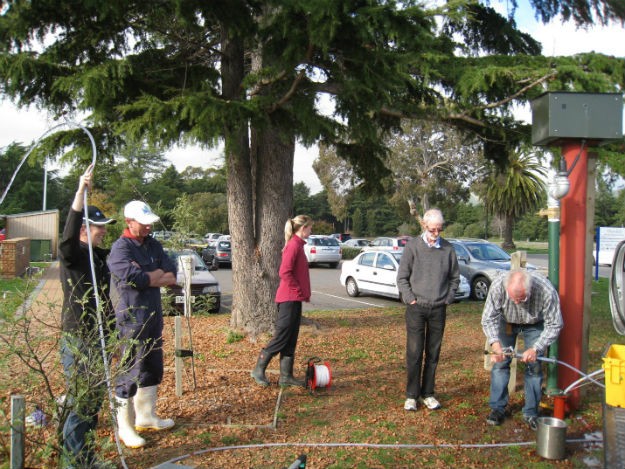
Collecting samples was not always trivial â configuring connections and ensuring adequate pressure in the tubing was necessary to make sure samples were collected without including any air.
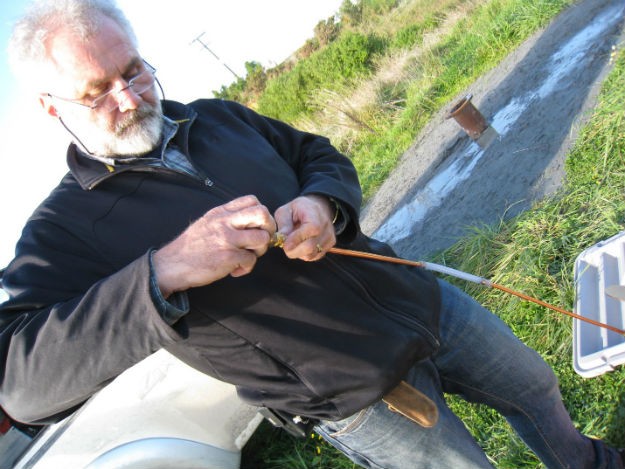
For wells where a pump or artesian flow werenât available, samples were collected in situ by lowering pressurized tubes into the well and removing pressure to collect water at depth.

On the last day of fieldwork the team sampled in the Taranaki region on the North Island. Mount Taranaki, an active volcano, stands in the distance at a sampling well.
Noble gases, the elements on the far right of a periodic table, are uniquely unreactive with other elements. This property makes them well-suited for estimating past temperatures. By measuring the dissolved concentrations of noble gases in ancient groundwater, researchers at Columbia University's Lamont-Doherty Earth Observatory hope to determine how many degrees New Zealand warmed as it came out of the last ice age some 20,000 years ago. In early June, a research team led by Martin Stute, a hydrologist with joint appointments at Lamont-Doherty and Barnard College, collected groundwater samples from a dozen wells on New Zealand's North and South Islands. I traveled with Stute and his colleagues Uwe Morgenstern and Mike Stewart from New Zealand's Institute of Geological and Nuclear Sciences (GNS) to do the sampling.
Elsewhere in New Zealand, Lamont-Doherty researchers have used surface exposure dating of glacial moraines in the Southern Alps to also reconstruct climate changes from the last ice age. Our pilot study aims to compare those results with our groundwater analysis to resolve an ongoing debate about how much warming occurred at low-latitudes and mid-latitudes in the southern hemisphere. Understanding the magnitude and timing of warming in the Southern Hemisphere at the end of the last ice age is important for better understanding global climate sensitivity.
Here's how our method works. Henry's law, a favorite equation of high school chemistry courses, equates the amount of dissolved gas in a fluid to its partial pressure multiplied by a temperature-dependent coefficient. Henry's law also represents the basic principle behind paleotemperature reconstructions from groundwater, a proxy scientists have used in paleoclimate research worldwide since the 1970s. By knowing the partial pressures (concentrations) of atmospheric gases, past temperature can be inferred from old groundwater since the concentrations of dissolved gases in groundwater are temperature-dependent. But, of course, many gases react with water or are used in biological processes, altering their concentrations over time and making them unreliable temperature indicators. Noble gases, which are inert, are unique: their dissolved concentrations in old groundwater are a conservative proxy for past mean annual temperature.
Seltzer is a senior in Columbia's Department of Earth and Environmental Sciences.Â
